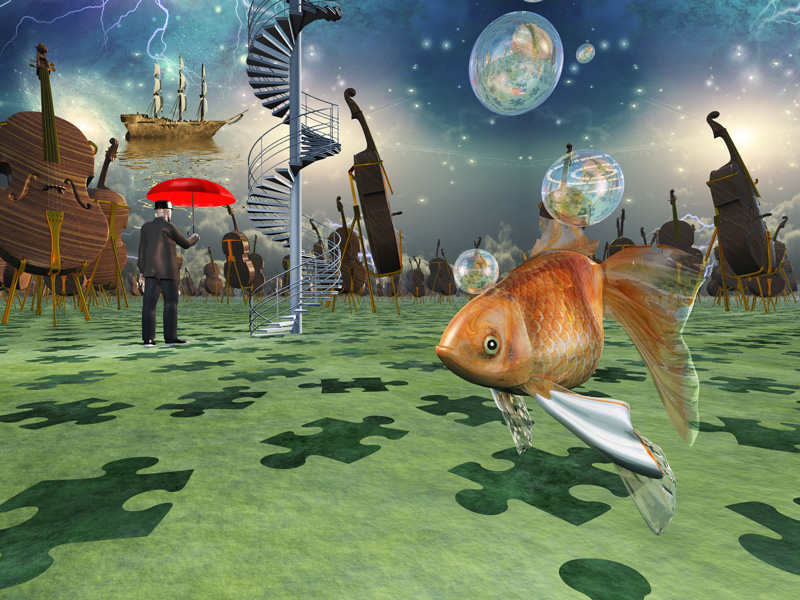- The COVID-19 virus can cause a number of other symptoms beyond fever, dry cough and anosmia.
- There has been a rise in patients complaining of hallucinations, and some evidence has emerged that it could be linked to the pandemic.
- A group of researchers based in London, England, investigated the link between Charles Bonnet syndrome, COVID-19 and hallucinations….
Just over a year ago, I was locked in an Addis Ababa hotel room during my first trip to the Ethiopian capital and I was certain that I could hear Peter the Great speaking to me from my bathroom. The great Russian emperor, who modernized his country and built St. Petersburg, urgently needed to tell me something. Perhaps he was concerned that my bathtub was not sufficiently watertight. He was a nautical man, after all…
Now, of course, Peter the Great was not lurking in my shower, or anywhere else for that matter, he died several hundred years ago. That is the problem with hallucinations: They do seem terribly real to the people who suffer them, so pity your correspondent as this was the first time it had happened to him. COVID-19 has a long list of symptoms beyond the classic signs of cough, fever and loss of taste and smell — hallucinations often come along, too.
Visual hallucinations brought about by the delirium of a strong fever are hardly anything new to clinicians. And while fevers do not really come up in ophthalmology or optometry consultations, visual hallucinations caused by changes to the eye do. This is especially true for those hallucinations caused by Charles Bonnet syndrome (CBS), or visual hallucinations caused by the brain’s adjustment to significant vision loss.
Pretty Patterns and Bright Lights
The visual hallucinations caused by CBS are characterized as complex, and can range from shapes, patterns and colors, to images of individuals, animals and more. This is despite CBS symptoms being cognitively normal without any mental health concerns. The syndrome was first described over 250 years ago; however, the condition remains poorly understood and is difficult to treat.1
CBS can occur at any age, though it is more likely to affect older patients and it has become more common among aging populations. According to one recent review2 of the condition, “All physicians who care for low vision or elderly patients should be aware of CBS’ clinical characteristics and treatment options. By being alert of the syndrome, caregivers will be able to decrease anxiety among the patients who experience it.” Its prevalence amongst older populations gives CBS something in common with COVID-19 too, which has disproportionately impacted the elderly.
Indeed, COVID-19 has also been found to cause long-term effects, and in rare cases, hallucinations have also been persistent. One 46-year-old woman was unfortunate enough to experience “persisting auditory and visual hallucinations after a COVID-19 induced delirium.”3 These disturbances persisted for three months after the other symptoms of the virus had dissipated, and thankfully the woman made a full recovery.
And now patients who suffer from CBS are reporting a worsening of their hallucinations in conjunction with COVID-19, leading some clinicians to report that visual hallucinations have indeed gotten worse during the pandemic. A group of researchers based in London, including representatives of Moorfields Eye Hospital and the Institute of Ophthalmology at University College London, set up a prospective cross-sectional survey of 45 individuals with active CBS. The researchers asked them questions designed to measure features of hallucinatory experiences during the COVID-19 lockdown and perceived episode triggers, allowing the subjects to frame their experiences in their own words.
Mental Health is a Pandemic Itself
It is important to note that this study was not just focused on the medical, but also the psychological aspects of CBS. The lockdowns many of us have become familiar with have caused considerable loneliness and poor mental health in many, especially among CBS patients. The researchers stated that loneliness during the lockdown was associated with changes like visual hallucinations, however many of the subjects had not accessed help for this issue.
In the end, the London researchers found that “around half of respondents in this survey experienced an exacerbation of visual hallucinations during the COVID-19 pandemic.” While pointing out that these hallucinations were most likely caused by loneliness and deteriorating mental health, they could not conclude this definitively. The researchers recommended that effective self-management of hallucinatory symptoms should be encouraged.4
COVID-19 is still a pandemic that deserves to be taken seriously, but so is poor mental health, — so any research into the issue would be warmly recommended. In the meantime, if you do happen to hear from Peter the Great from your bathroom, please let him know that the Media MICE team will not be building any warships anytime soon … but he is welcome to join us for a quick shot.
References:
- Carpenter K, Jolly JK, Bridge H. The Elephant in the Room: Understanding the Pathogenesis of Charles Bonnet Syndrome. Ophthalmic Physiol Opt. 2019;39(6):414-421.
- Schadlu AP, Schadlu R, Banks Shepherd J 3rd. Charles Bonnet Syndrome: A Review. Curr Opin Ophthalmol. 2009;20(3):219-222.
- Clouden TA. Persistent Hallucinations in a 46-Year-Old Woman After COVID-19 Infection: A Case Report. Cureus. 2020;12(12): e11993.
- Jones L, Ditzel-Finn L, Potts J, Moosajee M. Exacerbation of Visual Hallucinations in Charles Bonnet Syndrome Due to the Social Implications of COVID-19. BMJ Open Ophthalmol. 2021;6:e000670.




